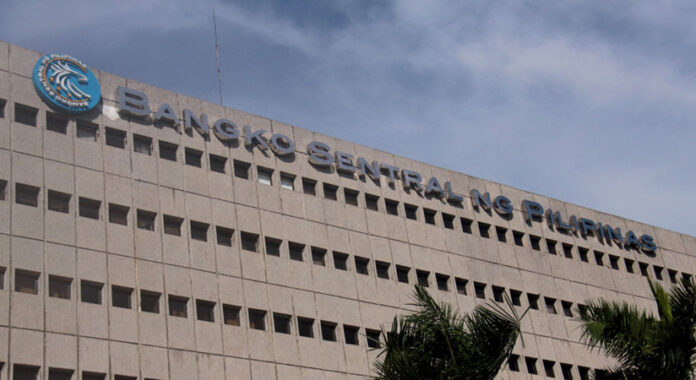The Bangko Sentral ng Pilipinas (BSP) lowered the country’s balance of payments (BoP) surplus projection for this year, reflecting the lower current account surplus and the risks arising from the spread of the more infectious coronavirus variant and delays in the vaccine rollout.
The Monetary Board on Thursday approved the revised BoP projections for 2021 and 2022.
The BoP is now projected to yield a surplus of $4.1 billion or equivalent to 1.1% of gross domestic product (GDP), significantly lower than the previous forecast of a $7.1 billion surplus (1.8% of GDP).
The BoP gives a glimpse of the country’s transactions with the rest of the world at a given time. A deficit reflects more funds fleeing the country than what went in, while a surplus means more money entered the economy.
In a statement, the BSP said the current BOP assessment takes a “more guarded view” of economic developments at home and abroad in the last few months of the year.
“The lingering uncertainty continues to cast a shadow on external sector prospects over the near term as the direction and duration of the pandemic remains little known,” it said.
The BSP cited key risks from the Delta-driven surge in coronavirus cases that prompted stricter lockdowns, as well as supply and logistical issues hounding the vaccine rollout.
“The narrower BOP surplus reflects the expected lower current account surplus of US$3.5 billion (0.9 percent of GDP) from the previous projection of US$10.0 billion (2.5 percent of GDP) amid the expected widening of the trade-in-goods deficit,” the central bank said.
Latest data from the BSP showed the country’s BoP position stood at a deficit of $1.3 billion in the first seven months of 2021, a reversal from the $4.117-billion surplus a year ago.
For 2022, the BOP surplus is seen further narrowing to $1.7 billion (0.4% of GDP), lower than the previous forecast of $2.7 billion (0.6% of GDP), on the back of an anticipated reversal of the current account to a $1.4-billion deficit (-0.3% of GDP).
BSP Department of Economic Research Senior Director Zeno R. Abenoja said in an online briefing that imports are expected to be “reinvigorated” as more business activities resume and the government ramps up its infrastructure projects.
Steady inflows from both overseas Filipino remittances and outsourcing revenues as well as some recovery in travel receipts lend support to the current account next year, the BSP said.
The BSP expects cash remittances to grow at a faster 6% this year from the previous 4% growth estimate. By 2022, the central bank sees these inflows rising by 4%, unchanged from previous projection.
Cash remittances in the first seven months jumped by 5.8% to $17.771 billion.
“We have also observed increased global demand for foreign workers, as host economies start rebooting their economies. And finally, the rise in access to digital financial services could also facilitate remittance transfers, and that would be reflected in our former BoP numbers,” Mr. Abenoja said.
On the other hand, the central bank expects foreign direct investment inflows of $7 billion and $7.5 billion for 2021 and 2022, both lower than the $7.5 billion and $8.5 billion previous projections.
The BSP expects hot money to yield net inflow worth $4.3 billion (from $5.5 billion) this year and $5.7 billion (from $7.4 billion) next year. Both are lower than previous estimates.
Meanwhile, gross international reserves projection has been trimmed to $114 billion (from $115 billion) and $115 billion (from $117 billion) for 2021 and 2022, respectively.
“Although it is slightly lower than the previous projections, we take into account the outflows from the foreign currency withdrawals of the national government from its deposits with the BSP to pay its obligations and fund various expenditures,” Mr. Abenoja said.
The dollar buffers reached a seven-month high of $108.046 billion as of end-August, boosted by fresh special drawing rights from the International Monetary Fund. — LWTN

